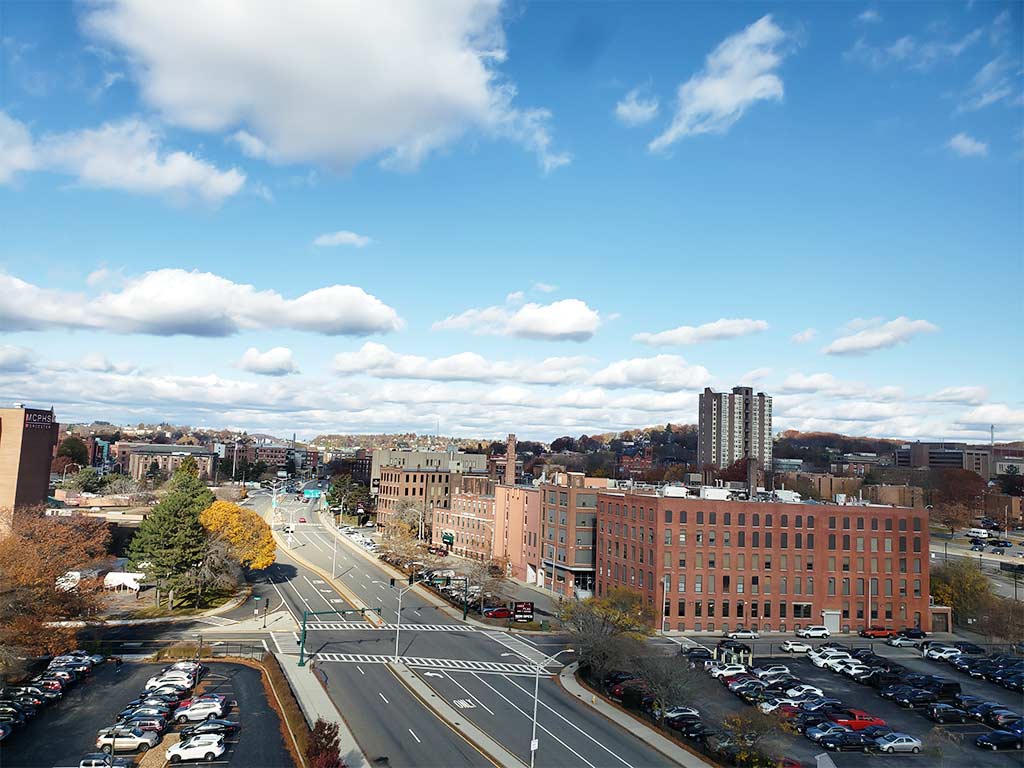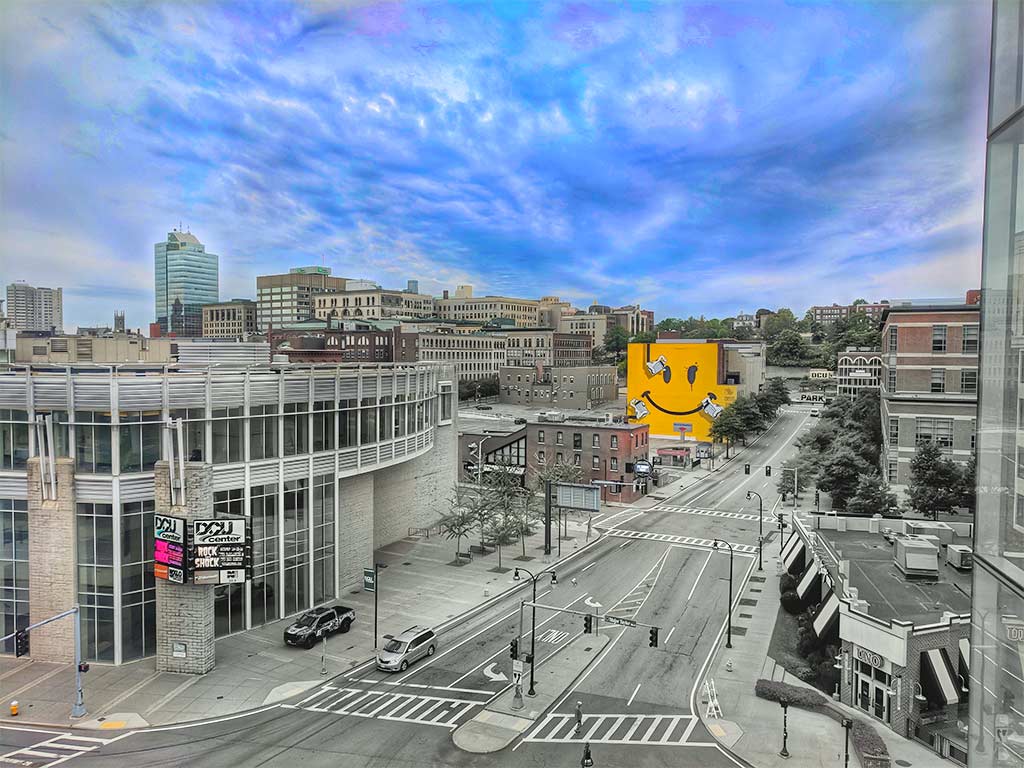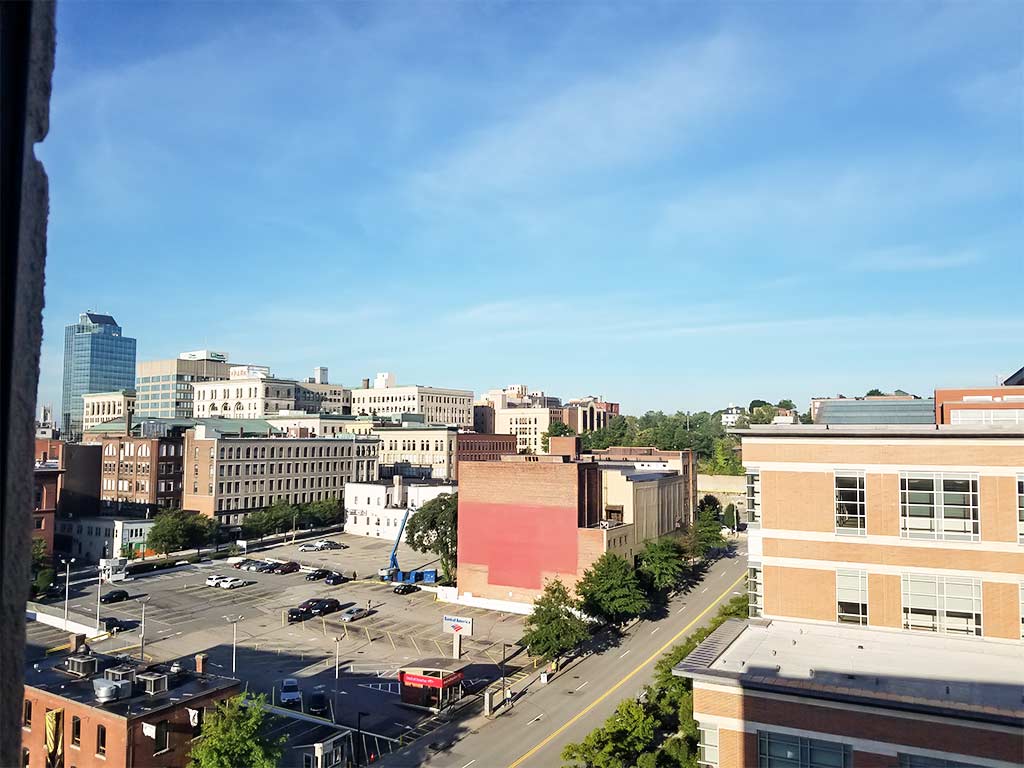Located in the vivid city of Worcester, Massachusetts, the streets tell a rich tapestry of history and culture. From the iconic Worcester Skyline to the historic American Antiquarian Society, each street holds a unique story waiting to be explored.
With landmarks like Bancroft Tower and Union Station, Worcester’s streets are not just pathways but living chronicles of the city’s past and present.
Worcester’s streets are more than just thoroughfares; they are the veins that connect the heart of the Commonwealth.
Whether it’s the charm of a triple-decker house on Catharine Street or the grandeur of City Hall, each street beckons visitors to immerse themselves in Worcester’s diverse architectural landscape.
As one navigates through the City of the Seven Hills, the streets whisper tales of resilience, innovation, and community spirit.
In Worcester, every street is a chapter waiting to be discovered, a testament to the city’s enduring legacy and dynamic evolution.
Join us as we wander through the streets of Worcester, where history meets modernity in a harmonious blend of past and present.
Historical Overview of Worcester’s Streets

Worcester’s streets bear witness to the city’s rich historical tapestry, offering a glimpse into its past while paving the way for a bright future.
Each street is a thread in the intricate fabric of Worcester’s narrative, weaving together tales of resilience, progress, and community spirit.
Colonial Beginnings and Development
In the colonial era, Worcester’s streets were mere dirt paths trodden by early settlers seeking a new life. As the settlement grew, these pathways evolved into cobblestone roads, connecting the budding town to neighboring communities.
Streets like Main Street and Elm Street, once bustling with horse-drawn carriages, became the arteries of commerce, shaping Worcester’s identity as a hub of trade and industry.
20th Century Industrial Growth
The 20th century saw Worcester’s streets transform into bustling thoroughfares lined with factories and warehouses, reflecting the city’s industrial prowess.
Streets such as Chandler Street and Park Avenue became synonymous with innovation and progress, as manufacturing plants and mills sprung up along their corridors, driving the city’s economy forward.
Worcester’s streets echoed with the clatter of machinery, heralding a new era of prosperity and growth. These developments solidified Worcester’s reputation as an industrial hub, attracting a wave of immigrants seeking employment opportunities in the growing city.
As a result, the population surged, leading to further expansion and development of Worcester’s urban landscape.
Modern Revitalization Efforts
In recent years, Worcester has embarked on ambitious revitalization efforts to breathe new life into its streets and neighborhoods.
Initiatives like the redesign of Chandler Street to accommodate bike lanes and pedestrian walkways reflect the city’s commitment to sustainability and safety.
Through urban redevelopment projects and beautification efforts, Worcester is reimagining its streets as vivid, pedestrian-friendly spaces that foster a sense of community and belonging.
By prioritizing green spaces and promoting active transportation, Worcester is creating a more sustainable and inviting environment for residents and visitors alike.
These efforts not only enhance the quality of life in the city but also contribute to its overall economic growth and vitality.
Major Streets in Worcester Massachusetts

Worcester, Massachusetts, is the second-largest city in New England and features a diverse network of major streets and thoroughfares that connect its neighborhoods, commercial areas, and cultural landmarks.
Here is an overview of some of the most significant streets in Worcester:
Main Street
Main Street runs through the heart of Worcester and serves as one of the primary arteries of the city. It extends from the northern edge of the city, near the campus of Assumption University, and continues south through downtown Worcester, passing City Hall and other key civic buildings.
Main Street is lined with a mix of historic buildings, restaurants, shops, and modern developments. Further south, Main Street intersects with Park Avenue, a bustling thoroughfare known for its rich dining scene and upscale boutiques.
This intersection marks a transition in the streetscape, with Park Avenue offering a more contemporary and upscale shopping and dining experience compared to the historic charm of Main Street.
Park Avenue
Park Avenue, commonly referred to as “Park Ave,” is a major north-south route on the western side of the city. It stretches from the Greendale neighborhood in the north to the College Hill neighborhood in the south.
Park Avenue is known for its diverse range of businesses, including eateries, retail stores, and service providers, making it a bustling commercial corridor.
Additionally, Park Avenue is lined with beautiful trees and historic buildings, adding to its charm. This street is also a popular residential area, with a mix of apartments and single-family homes, making it a desirable location for many residents in Worcester.
Lincoln Street
Lincoln Street is a key northeast-southwest route that connects downtown Worcester with the northeastern parts of the city.
This street is a significant commercial and residential area, hosting various shops, restaurants, and community services. Lincoln Plaza, a major shopping center, is located along this street.
If you are looking for a diverse range of shopping and dining options in Worcester, Lincoln Street should be at the top of your list.
With Lincoln Plaza as a focal point, this bustling area offers convenience and variety to residents and visitors alike.
Shrewsbury Street
Shrewsbury Street is one of Worcester’s most vivid dining and entertainment districts. Running from the east side of downtown to the Shrewsbury town line, this street is renowned for its array of restaurants, cafes, and bars.
It is a popular destination for both residents and visitors looking to enjoy a variety of cuisines and nightlife options. Visitors to Shrewsbury Street in Worcester, Massachusetts can explore a diverse range of dining options, from cozy cafes to lively bars.
This vivid district caters to all tastes and preferences, making it a must-visit for anyone in search of delicious food and exciting nightlife.
Highland Street
Highland Street runs east-west and is notable for passing through several prominent neighborhoods, including Worcester’s West Side.
It connects downtown Worcester with residential areas and institutions such as Worcester Polytechnic Institute (WPI). Highland Street is also home to Elm Park, one of the oldest public parks in the United States.
Harrington Way is another significant street in Worcester, intersecting with Highland Street and providing access to important facilities like UMass Memorial Medical Center.
It serves as a vital route for commuters traveling to and from the city center, contributing to the overall connectivity of Worcester’s transportation network.
Chandler Street
Chandler Street is another significant east-west street that traverses several neighborhoods, including Tatnuck Square, where it intersects with Park Avenue.
Chandler Street features a mix of residential and commercial properties and is known for its eclectic array of shops, restaurants, and small businesses.
Chandler Street is a bustling thoroughfare in Worcester, Massachusetts, connecting various neighborhoods and offering a diverse selection of shops and eateries.
Its intersection with Park Avenue in Tatnuck Square adds to its vibrancy and appeal to residents and visitors alike.
Grafton Street
Grafton Street runs from downtown Worcester southeast towards the town of Grafton. This street is a vital link between the city center and southeastern neighborhoods, providing access to residential areas, schools, and local businesses. Grafton Street is a major route for those commuting into and out of the city.
It is essential for local commuters and residents alike, as it eases transportation between different parts of Worcester, fostering connectivity and accessibility within the city. Its significance cannot be understated in the local infrastructure.
Belmont Street
Belmont Street is a major east-west thoroughfare that connects the downtown area with the eastern parts of Worcester, including the neighborhood surrounding UMass Memorial Medical Center.
It is a critical route for medical professionals and patients traveling to and from the hospital. Belmont Street also provides access to various residential and commercial zones.
Additionally, Belmont Street is lined with a variety of dining options, shops, and service providers, making it a bustling hub of activity in Worcester. This vivid street truly encapsulates the diversity and liveliness of the city.
Southbridge Street
Southbridge Street is an important route that extends from the downtown area southwest towards the town of Auburn.
This street is heavily traveled and features a mix of industrial, commercial, and residential areas. It also passes by the DCU Center, Worcester’s primary arena and convention center.
Additionally, Southbridge Street provides easy access to major highways like I-290, making it a convenient thoroughfare for both locals and visitors navigating around Worcester, Massachusetts.
Overall, Southbridge Street plays a crucial role in connecting different parts of Worcester, offering a diverse landscape of businesses and residences.
Its strategic location near the DCU Center and major highways enhances its accessibility and utility for commuters and tourists exploring Worcester, Massachusetts.
Pleasant Street
Pleasant Street is a prominent east-west street that runs parallel to Highland Street and connects downtown Worcester with the western suburbs.
It passes through the Elm Park neighborhood and features a range of local businesses, schools, and residential areas. Pleasant Street is also known for its historical significance and charming architecture.
Some notable landmarks along Pleasant Street include Elm Park, a beautiful public park established in 1854, and Worcester Polytechnic Institute, a prestigious university known for its engineering programs. The street offers a blend of history, education, and community in Worcester, Massachusetts.
Infrastructure and Transportation

Exploring Worcester’s infrastructure and transportation landscape sheds light on the city’s ongoing efforts to enhance safety and accessibility for residents and commuters.
Public Transit Systems
Worcester boasts a robust public transit system that plays a vital role in facilitating mobility within the city and connecting residents to various destinations.
The Worcester Regional Transit Authority (WRTA) operates an extensive network of bus routes, offering affordable and convenient transportation options for those living and working in the area.
Additionally, the WRTA has been proactive in implementing measures to improve service efficiency and passenger experience, contributing to the overall accessibility of public transportation in Worcester.
Roadway and Bikeway Developments
Recent initiatives in Worcester focus on enhancing roadway and bikeway infrastructure to address safety concerns and promote alternative modes of transportation.
One notable project is the proposed reconstruction of Chandler Street, a critical intervention aimed at mitigating traffic risks and improving conditions for pedestrians and cyclists.
By narrowing the roadway to calm traffic and create space for physically-protected bike lanes, the city aims to create a more pedestrian and bike-friendly environment along this corridor.
Such developments align with Worcester’s commitment to fostering sustainable transportation options and creating safer streets for all road users.
Cultural and Economic Impact
Streets in Worcester, Massachusetts play a crucial role in shaping the cultural landscape and driving economic activity in the city.
Understanding the significance of streets as cultural hubs and their economic contributions sheds light on Worcester’s rich tapestry of history and development.
Streets as Cultural Hubs
In Worcester, streets serve as more than just transportation pathways; they are rich cultural hubs that reflect the city’s diverse heritage and community spirit.
From the historic Main Street lined with iconic buildings to the bustling Chandler Street known for its local eateries and shops, each street tells a story of Worcester’s past and present.
Festivals, events, and public art installations along these streets showcase the creativity and vibrancy of the local arts scene, inviting residents and visitors to explore and engage with the city’s cultural fabric.
Economic Contributions of Prominent Streets
Prominent streets in Worcester, Massachusetts play a pivotal role in driving economic growth and prosperity in the region.
Streets like Main Street, Park Avenue, and Worcester Common serve as commercial corridors, hosting a myriad of businesses ranging from quaint boutiques to upscale restaurants.
These streets not only provide a platform for entrepreneurs and businesses to thrive but also attract tourists and visitors, boosting the local economy.
The strategic positioning of these streets, coupled with a bustling street life and pedestrian-friendly infrastructure, enhances the overall economic vitality of Worcester, making it a hub for commerce, innovation, and cultural exchange.
Planning and Future Prospects
Starting with urban development plans for Worcester, Massachusetts, the city focuses on enhancing its infrastructure to meet the growing needs of its residents.
Urban Development Plans
Worcester’s urban development plans aim to revitalize key areas of the city, fostering economic growth and creating rich communities.
By strategically developing underutilized spaces and enhancing transportation networks, the city seeks to attract new businesses and residents, further solidifying its position as a thriving economic hub in Massachusetts.
The city’s focus on improving streets in Worcester, Massachusetts plays a crucial role in these urban development efforts.
Upgrading road infrastructure not only enhances transportation networks but also contributes to the overall revitalization of key areas, making them more accessible and attractive to businesses and residents.
Sustainability and Green Initiatives
In line with global environmental trends, Worcester is actively pursuing sustainability and green initiatives to reduce its carbon footprint and promote eco-friendly practices.
By investing in renewable energy sources, green spaces, and sustainable transportation options, the city is committed to creating a more environmentally conscious urban environment for its inhabitants.
Through infrastructure improvements like bike lanes, electric vehicle charging stations, and public transportation enhancements, Worcester aims to decrease reliance on cars and promote eco-friendly commuting options for residents and visitors alike.
Frequently Asked Questions
What is Worcester focused on in terms of development?
Worcester is focused on sustainable transportation, urban revitalization, and economic development to enhance safety and accessibility.
Can you provide an example of Worcester’s development initiatives?
Initiatives like the Chandler Street reconstruction project showcase Worcester’s dedication to improving pedestrian and cyclist safety.
What are Worcester’s goals with urban development plans?
Worcester aims to rejuvenate underutilized spaces, attract businesses, and cultivate rich communities through strategic urban development.
How is Worcester improving its transportation networks?
Worcester is actively bolstering its transportation networks to support economic growth and sustainability efforts.
What values does Worcester prioritize in its development strategies?
Worcester values growth, environmental responsibility, and sustainable practices in its urban development plans.
Conclusion
Worcester, Massachusetts, is undeniably on a trajectory of transformation. With a focus on sustainable transportation, urban revitalization, and economic growth, the city is paving the way for a brighter future.
Initiatives like the Chandler Street reconstruction project embody Worcester’s commitment to creating a safer and more accessible environment for pedestrians and cyclists.
Through strategic urban development plans, Worcester aims to breathe new life into underutilized spaces, attracting businesses and residents to foster rich communities.
By bolstering its transportation networks and embracing sustainability, Worcester is positioning itself as a thriving economic center that values both growth and environmental responsibility.
Jaclyn Lowe